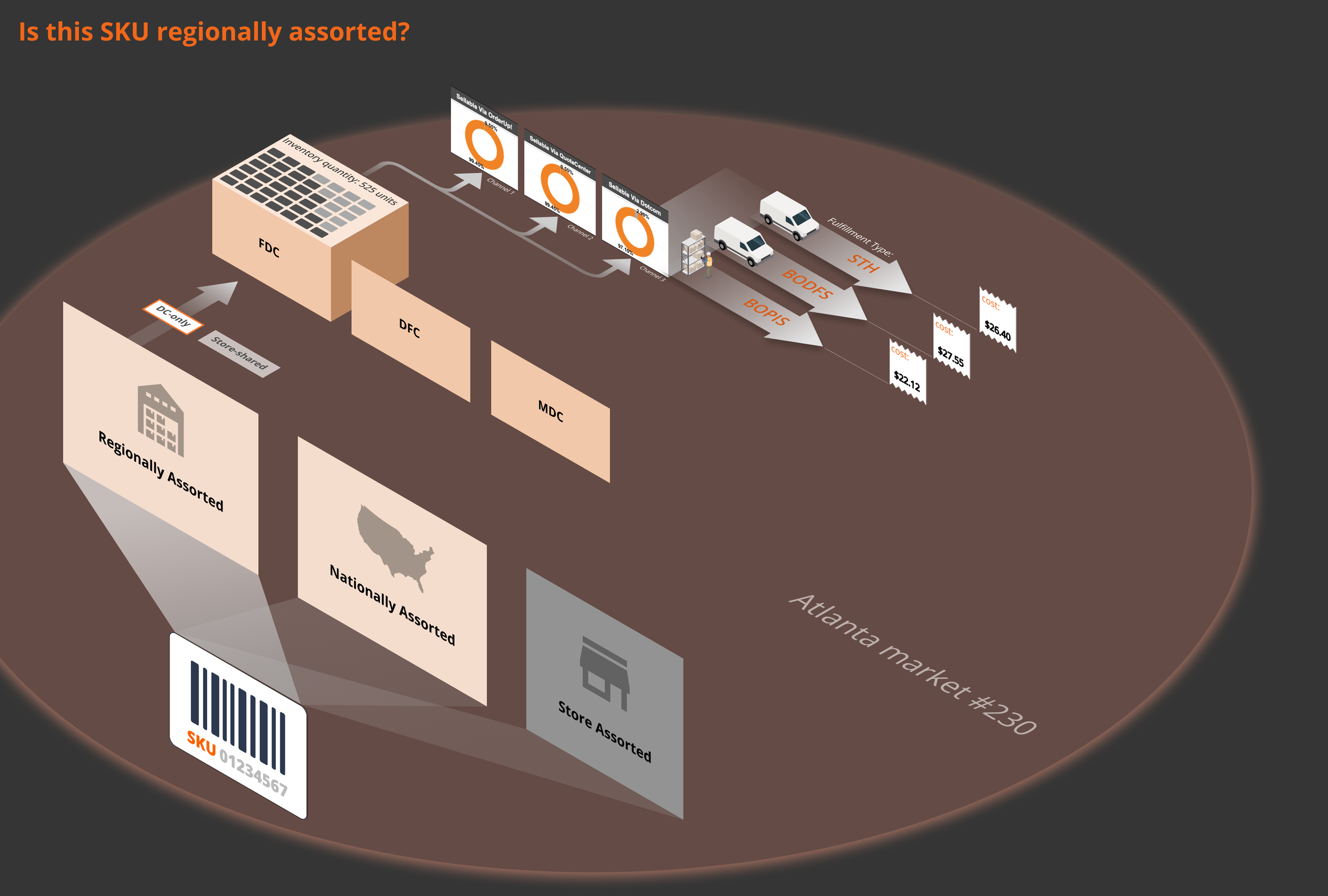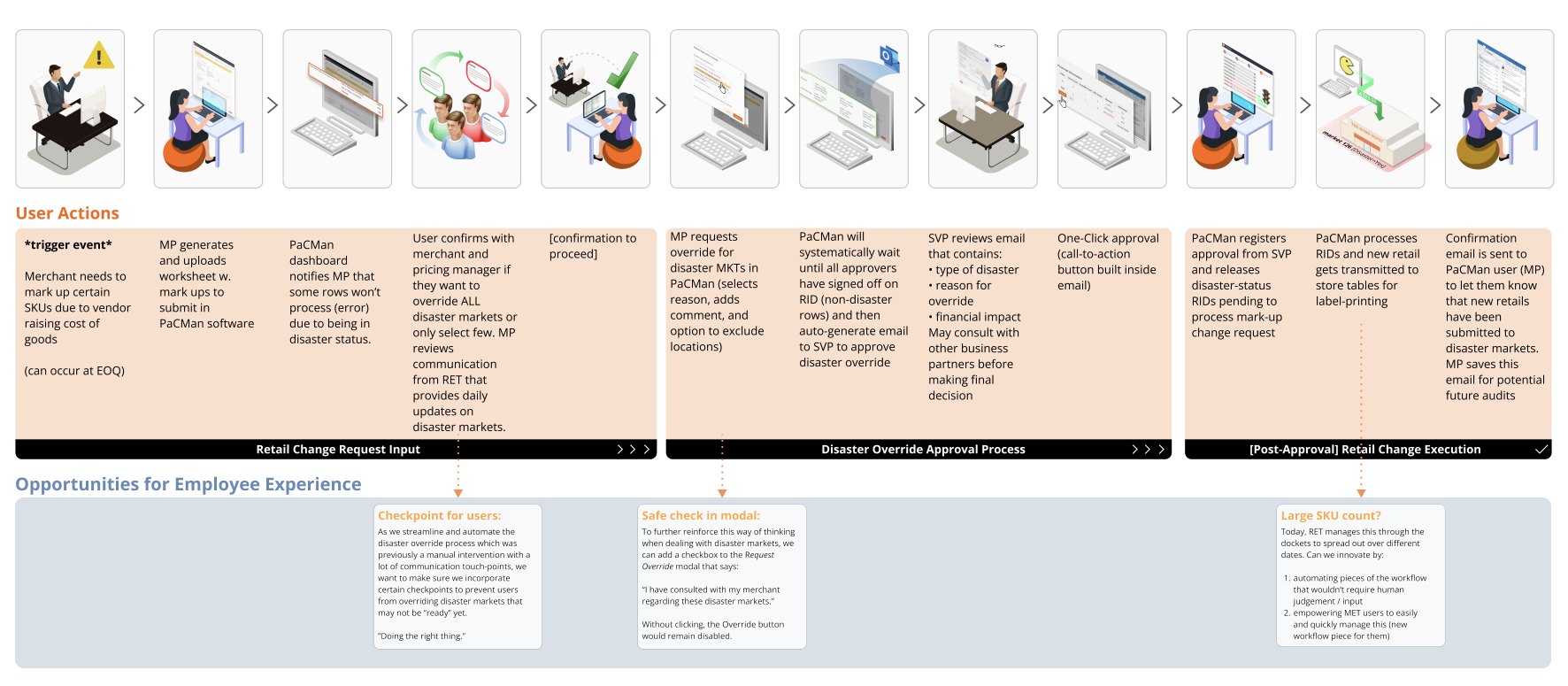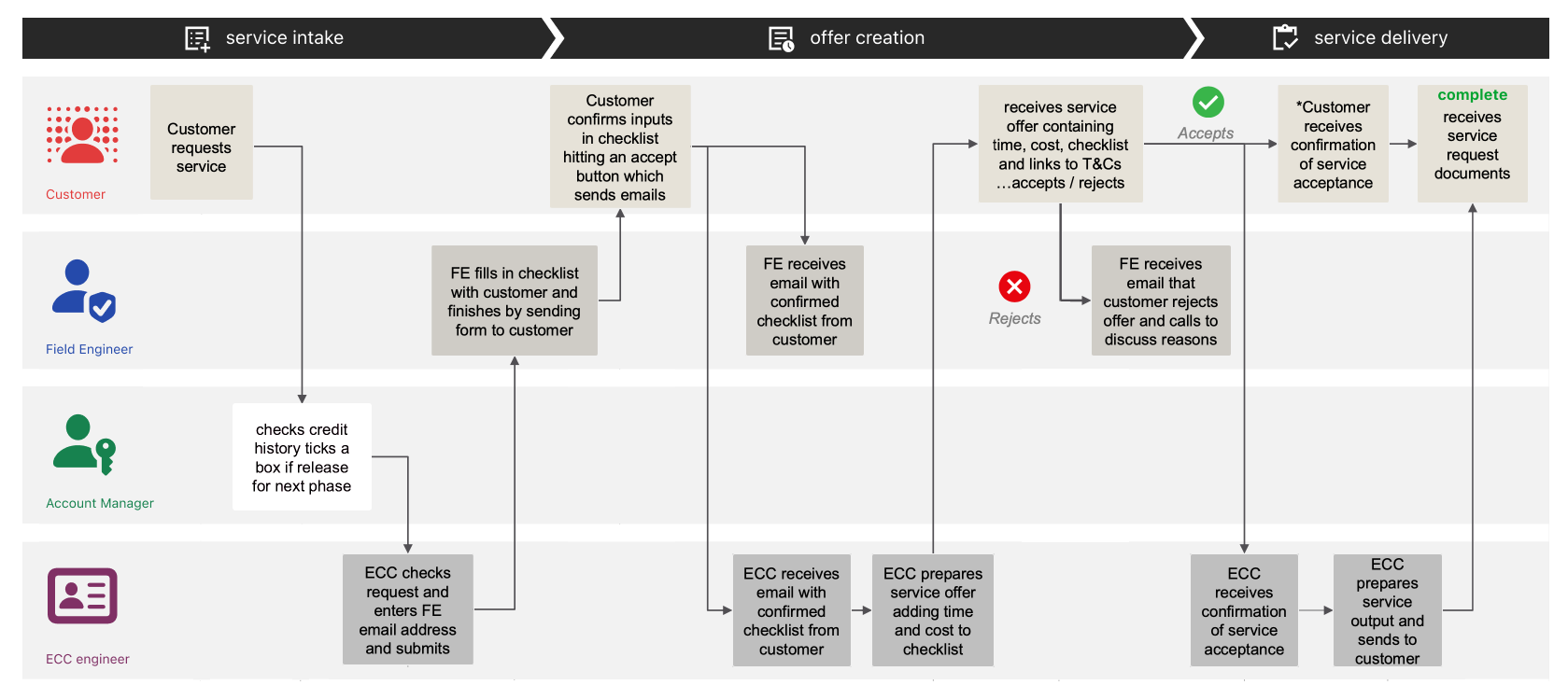Artifact 1. “User activities in context with physical locations”
This journey map was developed for a graduate course with a team of 3 designers, me being the lead Service Designer, to help visualize a new service concept that would incorporate sustainable practices on campus while leveraging existing facilities and resources.
Artifact 2. “Users, Software, and Processes”
In this journey mapping exercise, I helped my product team understand a user’s journey through a specific application, the task flows involved in that tool, as well as the back-end functions supporting the execution of the task (behind the scenes).
Artifact 3. “Current vs. Future state mapping”
This user flow evolved into more of a “service blueprint” artifact as additional layers of information came into the picture. This visual document sets the stage with a business scenario through the lens of a persona; their user flow interactions with a product; and some additional technical details.
Artifact(s) 4. “Capturing back end functions”
The following are snapshots of some behind the scenes processes that resulted from close collaboration with some engineering partners. These visual flows helped our product team make more informed decisions from a technical perspective and balance out short term vs. long term roadmap items.
Artifact 5. “Layering storyboards for added context”
This journey map is a hybrid that also contains a storyboard to aid understanding and provide richer context. The purpose of this document was to inform our balanced product team as to what the price-change experience looked like in the context of “overriding” price freezes with our current software.
Artifact 6. “Service Blueprint for Multi-User Workflow”
This service blueprint document was co-created with business and technical partners to translate current state manual processes into software automated workflows to streamline the intake, offer proposal, and delivery of a request (B2C context).










